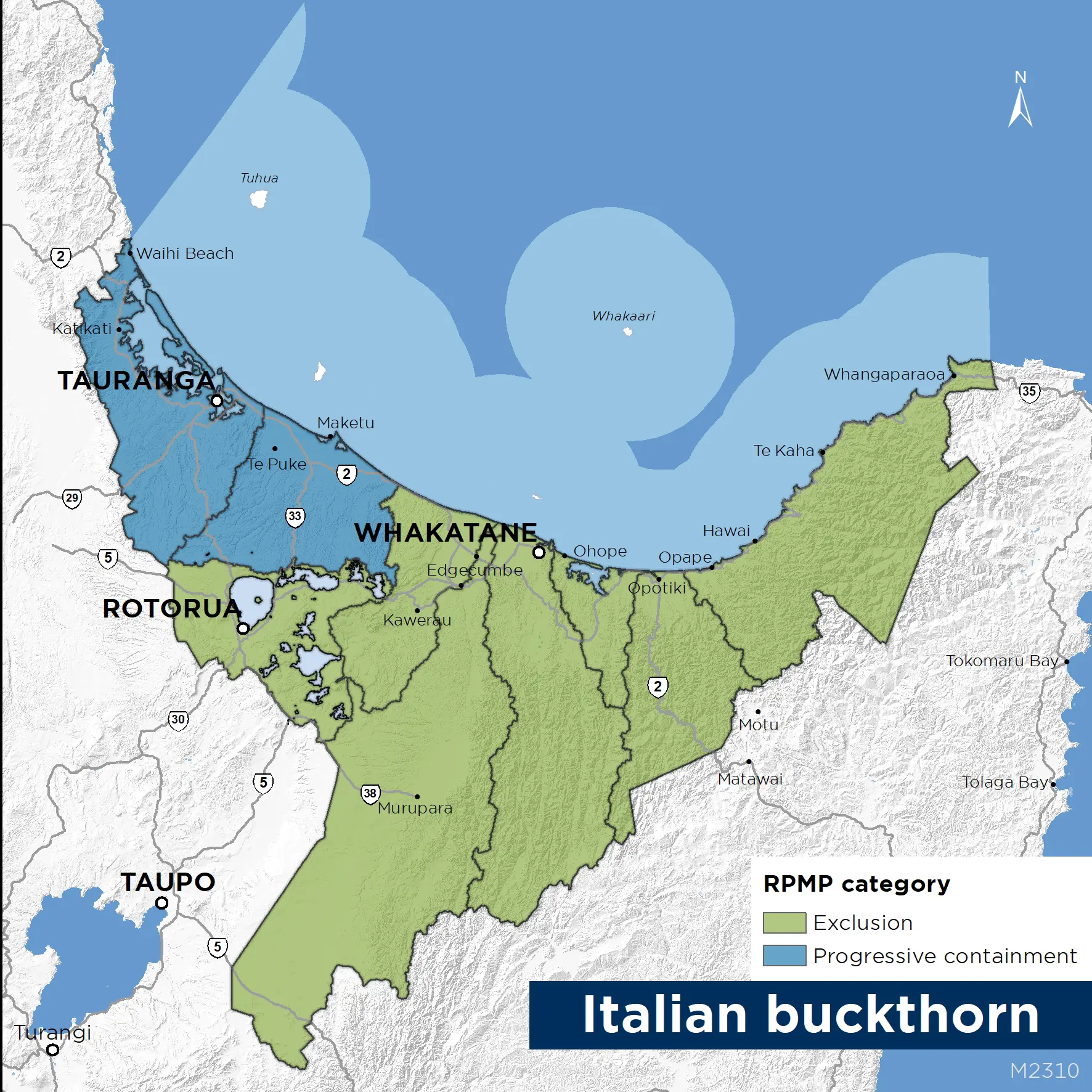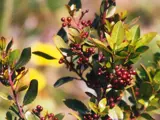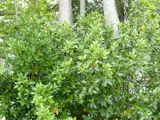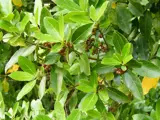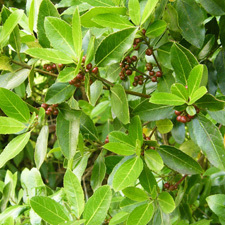 Italian buckthorn
Italian buckthorn
Common name: Italian buckthorn
Botanical name: Rhamnus alaternus
Management category: Exclusion, Progressive containment
Native to the Mediterranean and introduced to New Zealand as a garden plant, especially popular as a hedging plant due to its hardy nature and exceptionally fast growth rate.
Why is it a pest?
- This plant is a serious threat to pohutukawa and other native coastal species. It quickly dominates space by producing masses of seeds and pushing out the establishment of native plants. Essentially, this creates a buckthorn monoculture.
- Seeds are spread by birds.
Where is it found?
Italian buckthorn is present throughout the western Bay of Plenty on coastal areas and residential properties.
It is found in gardens, scrub, or forest margins in coastal areas, but is most common on or close to sand dunes. Risk areas include coastal areas, cliffs, forest margins, open areas, all types of forest and gardens.
What does it look like?
- An evergreen shrub up to 5m.
- Young shoots are purplish, angled, and hairy.
- Leaves are elongated (up to 6cm long and 3cm wide) are egg shaped, leathery, glossy on top and may be toothed along the edges.
- Flowers (May to November) are green, 3-4mm in diameter, fragrant and have no petals.
- Fruit is dark red and glossy, turning black when ripe.
What are the rules?
Italian buckthorn is both an exclusion and progressive containment pest. This means that in some areas (identified in the map below) the Bay of Plenty Regional Council is responsible for its control and in others landowners are responsible.
Exclusion
Exclusion pests are not known to be established throughout the Bay of Plenty region. The Bay of Plenty Regional Council is responsible for managing new incursions into the region.
Progressive containment
Progressive containment species are pests which the council aims to prevent from spreading, reduce the distribution, or eradicate within parts of the region over time. Landowners or occupiers are responsible for the control of progressive containment species on their property. Council may enforce the control of these pest species.
How do you get rid of it?
In Exclusion zones identified in the map below please report any Italian buckthorn to the Bay of Plenty Regional Council. A biosecurity officer will contact you back for more information and arrange a site visit if needed.
For plants found in progressive containment zones please see below for control methods. When spraying Italian buckthorn is best controlled in spring – summer.
Hand pull small plants under 30cm and ensure the root is removed. Any roots left in the ground will easily resprout.
Plants should be sprayed until thorough coverage is achieved. All foliage should be wet to the point of runoff.
CAUTION: When using any herbicide or pesticide, PLEASE READ THE LABEL THOROUGHLY to ensure that all instructions and directions for the purchase, use and storage of the product, are followed and adhered to.
Read more on pest control advice, information and regulations.
Images

